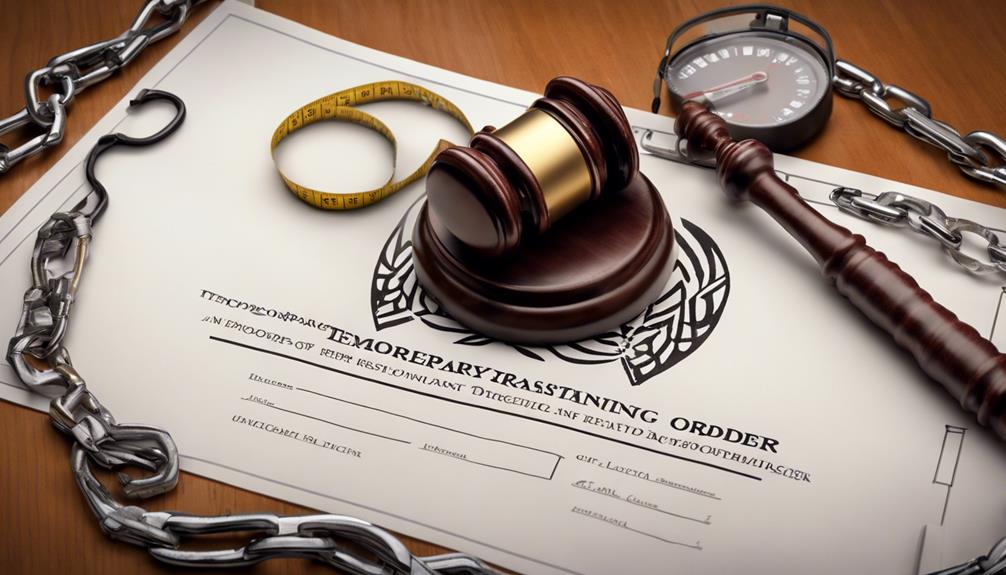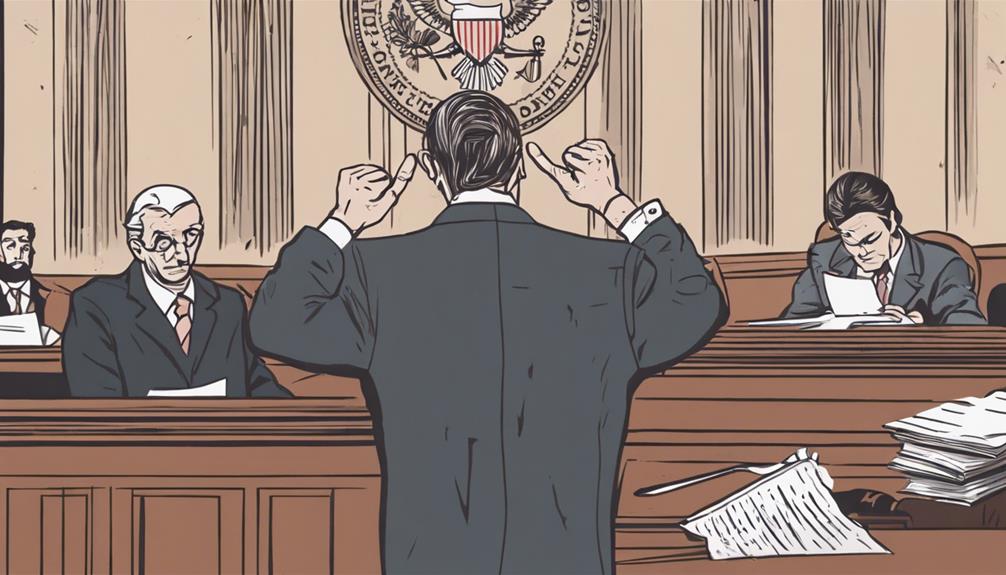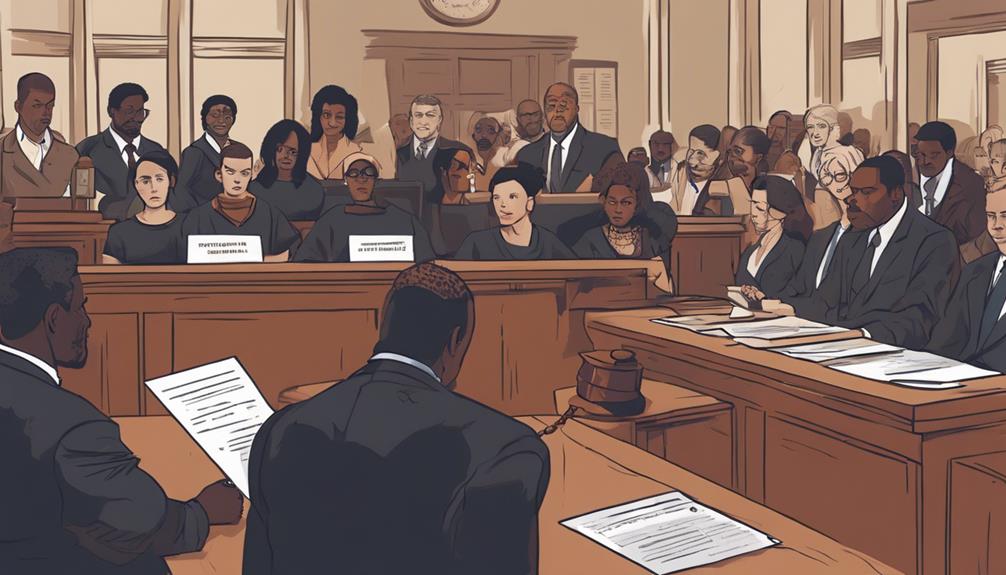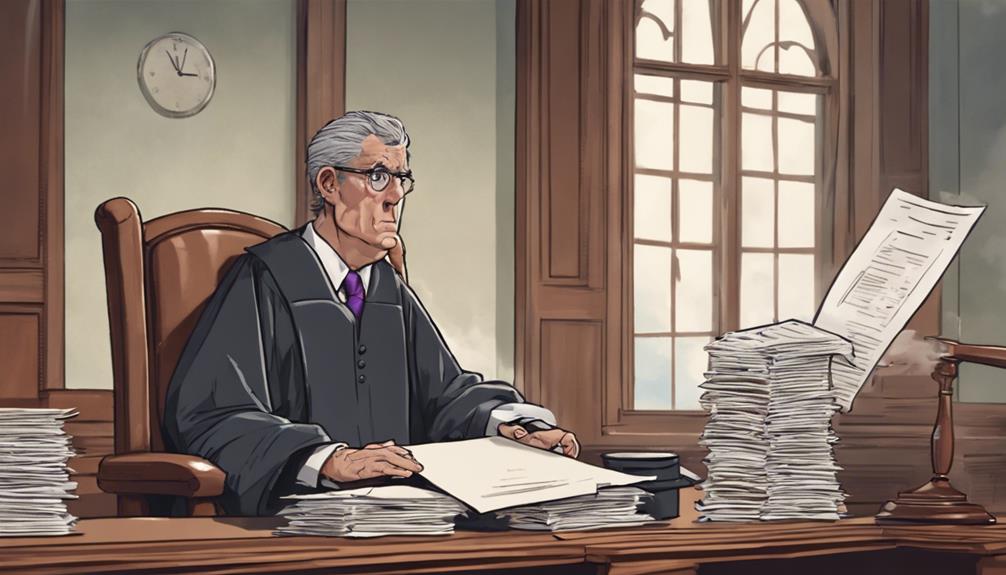When you're navigating the complexities of a Temporary Restraining Order (TRO) in Washington, understanding the bond requirement is crucial. You might wonder why a bond is necessary and how it impacts both parties involved. It's designed to protect against potential damages if the TRO turns out to be unwarranted, but determining the bond amount can be tricky. What happens if you don't secure this bond? The implications could be significant, affecting your legal standing and options moving forward…
Understanding Temporary Restraining Orders

When you're facing an urgent situation that requires immediate legal action, a temporary restraining order (TRO) can provide crucial protection. A TRO is a court order that prevents an individual from taking specific actions, often to stop harassment, threats, or harm.
You typically request a TRO when you believe you're in imminent danger or need to maintain the status quo while waiting for a more permanent solution.
To obtain a TRO, you'll need to file a petition with the court, detailing the reasons for your request. It's essential to provide strong evidence to support your claims.
The court may schedule a hearing, where you can present your case, and the opposing party might also have a chance to respond. If the judge finds your situation warrants it, they'll issue the TRO, which usually lasts for a short period, often until a more extensive hearing can take place.
Purpose of a TRO Bond
A TRO bond serves an important function in the process of obtaining a temporary restraining order. It protects the interests of the party against whom the order is issued. By requiring you to post a bond, the court ensures that you're taking responsibility for any potential damages caused if the restraining order is later found to be unjustified. This financial guarantee reassures the opposing party that they won't face undue harm without recourse.
When you file for a TRO, the bond acts as a safeguard, encouraging you to only pursue the order when it's genuinely necessary. It helps to deter frivolous requests, keeping the legal system efficient and fair. If the court ultimately rules in favor of the party who was restrained, they can claim compensation from the bond for any losses they incurred during the period of the order.
In essence, the TRO bond fosters accountability. You're not just seeking protection; you're also acknowledging the potential consequences your actions could have on others. This aspect is crucial in maintaining a balanced approach to temporary restraining orders in Washington.
Who Needs a TRO Bond?

If you're considering filing for a temporary restraining order (TRO) in Washington, you might be wondering about the necessity of a TRO bond.
In most cases, if the court grants your TRO, you'll likely need to post a bond to protect the respondent from potential losses caused by the order. This bond ensures that if the court later finds your TRO to be unjustified, the respondent can recover damages for any harm suffered.
Typically, individuals filing for a TRO, especially in cases involving harassment, domestic violence, or other urgent matters, will need to secure this bond.
It's crucial for you to consider your financial situation, as the bond amount may vary depending on the specifics of your case.
If you're unsure whether you need a bond, consulting with a legal professional can clarify your obligations and help you navigate the process.
How to Obtain a TRO Bond
Obtaining a TRO bond involves a few straightforward steps that you'll need to follow after your temporary restraining order is granted.
First, you'll want to contact a surety company or an insurance agent that specializes in bonds. They'll guide you through the process and help you understand any documentation you'll need to provide.
Next, gather the necessary information regarding your case, including details from the court order and any personal identification documents.
The surety company will assess your situation and may require a premium payment, usually a percentage of the bond amount.
Once you've completed the application with the surety company, they'll process it and issue the bond if everything checks out.
After receiving the bond, you'll have to file it with the court where your restraining order was issued. Make sure to keep copies of all documents for your records.
Bond Amount Determination

Determining the bond amount for a temporary restraining order (TRO) requires careful consideration of various factors.
First, you'll want to assess the potential damages that might occur if the TRO is later found to be wrongful. This could include lost income, business opportunities, or emotional distress. It's crucial to estimate these damages accurately to avoid setting an insufficient bond.
Next, consider the financial situation of both parties involved. If the respondent has significant assets, you might want to set a higher bond to ensure they can cover potential damages. Conversely, if they've limited means, a lower bond might be more appropriate.
Additionally, think about the nature of the case. Cases involving harassment or threats may warrant a larger bond due to the potential for severe consequences.
You should also factor in the urgency of the situation; if immediate protection is necessary, a prompt bond amount determination is vital.
Consequences of Not Posting Bond
Failing to post the required bond for a temporary restraining order can lead to significant legal repercussions. If you don't post the bond, the court may deny your request for the restraining order altogether. This means you won't receive the legal protection you sought, leaving you vulnerable to the very actions you were trying to prevent.
Moreover, without the bond, the opposing party may have grounds to contest your claims more vigorously. They might argue that your failure to post the bond indicates a lack of seriousness in your case, which can weaken your position in court. This could also lead to delays in legal proceedings or even additional costs associated with a prolonged case.
Additionally, if your request for a restraining order is ultimately denied, you could face the risk of having to pay the other party's legal fees, especially if they can prove that your actions were frivolous or malicious.
All in all, not posting the bond can significantly hinder your chances of obtaining the protection you need, and it's crucial to understand these potential consequences before proceeding.
Legal Rights of Affected Parties

When a temporary restraining order is sought, the legal rights of affected parties come into play and should be clearly understood. As someone involved in this process, you have specific rights you need to be aware of.
If you're the party seeking the order, you have the right to present your case in a clear and compelling manner. This includes providing evidence to support your claims.
On the other hand, if you're the party being restrained, you have the right to defend yourself. You can contest the order by presenting your side of the story, and you may also seek legal counsel to help navigate this challenging situation.
It's important to know that both parties have the right to a fair hearing and to be informed about the proceedings.
Furthermore, if the temporary restraining order is issued, you have the right to appeal the decision, seeking a modification or dismissal of the order.
Understanding these rights can empower you to take appropriate actions, whether you're the applicant or the respondent, ensuring that your interests are protected throughout the legal process.
Filing Process for a TRO
The process of filing for a temporary restraining order (TRO) is crucial for those seeking immediate protection. To get started, you'll need to gather relevant information about the situation that necessitates the TRO. This includes details about any incidents of harassment, threats, or violence.
Next, head to your local courthouse or its website to obtain the necessary forms. Fill out these forms accurately, providing all required information. It's essential to be clear and specific about the reasons you need the TRO.
Once completed, file the forms with the court clerk. You may also be required to pay a filing fee, so be prepared for that. If you can't afford the fee, ask about a fee waiver.
After filing, you'll typically have a hearing scheduled where you can present your case before a judge. Make sure to gather any supporting evidence, like witness statements or photographs, to strengthen your request.
Common Misconceptions About TRO Bonds

Many people believe that a temporary restraining order (TRO) bond is a mandatory requirement for obtaining a TRO, but that's not always the case. In many situations, courts may waive the bond requirement, especially if you can demonstrate that the bond would cause undue hardship.
It's essential to understand that the purpose of a TRO bond is to protect the respondent from damages if the TRO is later found to be unjustified.
Another common misconception is that the bond amount is automatically set at a specific percentage of the claim. In reality, the court typically determines the bond amount based on the specifics of each case, including potential damages the respondent may face.
You might also think that securing a bond is a complicated process, but it can often be straightforward. Many insurance companies provide surety bonds, and the application process can be quick if you have all your documentation in order.
Conclusion
In Washington, securing a Temporary Restraining Order bond is crucial to protect your interests and ensure accountability. By understanding the purpose and process behind the bond, you can navigate the complexities of obtaining one more effectively. Remember, failing to post a bond could jeopardize your TRO request and lead to legal repercussions. Stay informed and proactive to safeguard your rights and ensure that you're prepared for any potential challenges.


